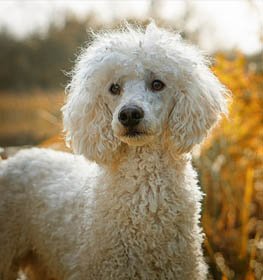German Spitz Information & Dog Breed Facts
Collection of all the general dog breed info about German Spitz so you can get to know the breed more.
| Group | Companion Dogs |
|---|---|
| Popularity Rank | 344 |
| Reviews | 2 |
| User Ratings | |
|
Compare the German Spitz With Other Dogs
Select at least one dog breed to make the comparsion. | |
 | |
| Origin | |
|
Common Names & Aliases
What other names is a German Spitz known by? Discover all traditional, regional and informal names used for this breed. | Deutscher Spitz |
|---|---|
|
Breed Classification
What type of dog breed is a German Spitz? Learn about its genetic classification and breeding category. | Purebred |
Photo Gallery of the German Spitz Breed
|
Size Classification
What size category is a German Spitz? Learn how big the German Spitz breed typically grows. | SmallMedium |
|---|---|
|
Weight Statistics
How much does a German Spitz weigh? Discover typical weight ranges for adult males and females of the German Spitz breed. | Male: 24-33 pounds (11-15 kg), Female: 18-27 pounds (8-12 kg) |
|
Average Weight
What is the average weight of a German Spitz? | Male: 28.5 pounds (13 kg), Female: 22.5 pounds (10 kg) |
|
Height
How tall is the German Spitz? German Spitz height: | Male: 19-23 inches (48-58 cm), Female: 15-19 inches (38-48 cm) |
|
Average Height
What is the average height of a German Spitz? | Male: 21 inches (53 cm), Female: 17 inches (43 cm) |
|
Price Range
How much does a German Spitz puppy cost? Find current market prices and factors affecting German Spitz costs. | $800-$1000 If you choose to purchase the German Spitz, you should know that the mentioned amount of money is an average of the collected data from breeders’ sites and puppy finder places. If you have a German Spitz for sale, please advertise it on a reliable website to make sure the German Spitz gets to a happy place. |
|---|---|
|
Availability
How easy is it to get a German Spitz? How many German Spitz are there in the world? | Average: The German Spitz is a commonly available dog breed. There is less risk of overbreeding compared to the very popular dogs. Of course, they may be more popular in some countries, and inbreeding may occur, so be careful. |
|
Intelligence Rating
How intelligent is a German Spitz? Discover the German Spitz's intelligence ranking and learning capabilities. | Very smart: German Spitz is an excellent dog breed. You can teach them many tricks and commands. The limit is your creativity. They understand and memorize new commands in 5-15 repetitions. This breed obeys the first command 85% of the time or better.
The German Spitz is one of the top breeds in the dog intelligence ranking. |
|---|---|
|
Training Difficulty
How easy is it to train a German Spitz? Learn about the German Spitz's trainability and response to training methods. | German Spitz dogs are easy to train. They find out the association between commands and actions quite quickly. |
|
Watchdog Rating
How good is a German Spitz as a watchdog? Learn about the German Spitz's alertness and guarding instincts. | German Spitz dogs are one of the best watchdogs. Their main job is to observe and they're very consistent in their effort. The best vocal cords and sense of hearing belong to them. Usually, they're very territorial and protective about their property, so the German Spitz dogs will alert you if they sense something different. |
|
Territorial Protection
Is a German Spitz protective of its territory? Learn about the German Spitz's guarding instincts and behavior. | German Spitz dogs are average defenders. Some dogs are very protective of their territory, while others easily let a stranger to trespass. This breed is not sure to defend its territory in every situation. |
|
Personality Traits
What personality does a German Spitz have? Learn about characteristic German Spitz temperament and behavior traits. | IndependentDevotedLivelyAttentiveTrainable |
|---|---|
|
Sensitivity Level
How sensitive are they? German Spitz sensitivity: | Sensitive: German Spitz dogs don't like an irregular daily routine, noisy household, and frequent guest visits.
This breed's emotional level reflects their owner's feelings and they don't handle punishments well. |
|
Affection Level
How affectionate are they? Is a German Spitz a good family dog? | Average: German Spitz dogs are average dogs regarding their affection level. Some breeds are forthcoming and friendly, while others are independent and don't bond too closely with their owners. |
|
Social Needs
How much social interaction does the Deutscher Spitz need? German Spitz social needs: | German Spitz dogs need for social interaction is average. This breed likes being around people or other animals, but they don't mind being left alone for a few hours either. |
|
Impulse to Wander or Roam
How likely is the German Spitz to run away? Does this breed explore or wander a lot? Does German Spitz roam? | German Spitz dogs have average wanderlust potential. Sometimes they like to explore the world and they might escape once or twice, but usually, they prefer staying safely at home. Safer to teach them how to get back to you on command. |
|
Prey Drive
Do this canine have a strong prey drive? Does German Spitz have high prey drive? | German Spitz dogs have a higher impulse to chase and catch something than other dog breeds. Cats or any other small animals might be in danger. It's a natural instinct, doesn't necessarily mean that German Spitz dogs are aggressive. Better to keep this breed on a leash. |
|
Barking Frequency
Does a German Spitz bark a lot? Learn about typical German Spitz vocalization patterns and triggers. | Average to High: The German Spitz is a vocal breed. Not the best choice if you prefer a quiet breed. They often bark loudly and howl sometimes. They can change their barks depending on their emotional level and what they're trying to say. Different barks could mean the same and the same barks could have different meanings.
Top reasons for barking: protection, alarm, fear, boredom, attention-seeking, greeting, separation anxiety, compulsive barking. |
|---|---|
|
Playful Nature
How playful is a German Spitz? Understand the typical play drive and energy level of the German Spitz breed. | The German Spitz is a playful breed. Excited barking and sometimes nipping will alert you to play. |
|
Apartment Adaptability
Can a German Spitz live in an apartment? Learn about the German Spitz's suitability for apartment living. | It is not the best choice if you want to keep them indoors, however, with careful exercise and several walks a day, they will tolerate the indoor environment, so it is possible to keep German Spitz indoors. |
|
Lifestyle Adaptability
How adaptable is a German Spitz to lifestyle changes? Learn about the German Spitz's flexibility to new situations. | Average: German Spitz dogs adapt to lifestyle changes and different living environments quite okay usually. |
|---|---|
|
Alone Time Tolerance
Can a German Spitz be left alone? Learn about the German Spitz's tolerance to solitude. | Just like every puppy, they are prone to panic, cry, bark, whine when they left alone by their owner. With proper socialization and quality time with the dog can solve this problem. |
|
Bite Risk Assessment
What is a German Spitz biting potential? Learn about the German Spitz's bite risk factors. | Low 🔽 The German Spitz has a low chance of biting somebody. Top reasons for dog bite: protection, pain, excitement, herding instinct, being provoked. (Data based on the available online bite statistics.) |
|---|---|
|
Mouthing Tendency
Is a German Spitz mouthy? Learn about the German Spitz's tendency to use mouth during play. | German Spitz dogs have a higher than average tendency to nip, chew, playbite, or herd people. It's a common habit during puppyhood, not aggressive behavior. These "bites" don't hurt, but German Spitz dogs need to be taught a good attitude. |
|
Bite Strength Rating
How strong is a German Spitz bite? Learn about the German Spitz's bite force measured in PSI. | Between 100 and 200 PSI 🔽 German Spitz bite force: Weak. The German Spitz bite force is considered weak when compared to other dog breeds. The bite force German Spitz measurements usually fall below 200 PSI, making them one of the breeds with the weakest bite force. The bite force of a German Spitz may be weak, but it's important to remember that any dog's bite can still be dangerous if not managed properly. Despite the bite force of German Spitz being lower, it does not make them any less lovable or enjoyable as pets.
German Spitz bite wounds might not be as severe, but it is still essential to be cautious and prevent any biting incidents. They are usually not aggressive and very friendly towards children and other animals. To ensure a well-behaved dog, it's essential to learn how to train a German Spitz puppy not to bite from an early age. With proper training and socialization, a German Spitz can be a wonderful addition to any family, providing love and companionship for years to come. |
|
Average Lifespan
How long does a German Spitz live? Learn about the typical lifespan of the German Spitz breed. | 12-14 years The average lifespan of German Spitz: 13 years |
|---|---|
|
Climate Tolerance
How well does a German Spitz handle different weather? Learn about the German Spitz's climate adaptability. | Tolerates warm and cold weather Dogs that tolerate hot and cold weather are typically those that have a double coat of fur. Dogs with a double coat of fur have a layer of fur that insulates their skin and helps protect them from the cold and the heat. |
|
Health Concerns
What health issues are common in a German Spitz? Discover typical conditions affecting the German Spitz breed. | German Spitzs are commonly healthy dogs. Vet costs aren't expensive with this breed. |
|
Vet Care Frequency
How often does a German Spitz need vet visits? Learn about the German Spitz's veterinary care requirements. | Rare The German Spitz should have a complete physical check-up at least every 12-18 months (but preferably once per year). If your dog shows any symptoms, call your veterinarian. |
|
Health Problems
What genetic/health problems does the German Spitz breed have? What are the health issues and concerns of the German Spitz breed? Most common health risks of German Spitz: | Luxating PatellaProgressive retinal atrophy (PRA)Dental Problems |
|
Energy Rating
How energetic is a German Spitz? Understand daily activity needs of the German Spitz breed. | German Spitz dogs have a higher energy level than other dog breeds. If you want a dog for snuggling on the couch, this breed isn't the perfect choice for you. |
|---|---|
|
Activity Requirement / Exercise Need
How much exercise does a German Spitz need? How much exercise do German Spitz dogs require per day?
Do German Spitz dogs need a lot of exercises? | German Spitz dogs need quite a lot of exercise. Daily walks should be on schedule. If you live an active life, this breed can be a good choice for you. |
|
Sleeping Need
How much sleep does the German Spitz breed need? | German Spitz dogs sleep 12-14 hours a day as an average dog and they're not considered a lazy breed. |
|
Obesity Tendency
Is a German Spitz prone to weight gain? Learn about the German Spitz's obesity risks. | Low to Average: The German Spitz has a low to the average risk for obesity. To make your dog happy and fit, feed him with quality dry dog food and live an active life together. Try to find the happy medium between exercise and feeding.
If you notice any weight gain, consult your veterinarian and make a diet plan. Reduce unhealthy food and snacks, and measure the German Spitz weight regularly. |
|---|---|
|
Food Consumption
How much food does a German Spitz need daily? Learn about the German Spitz's feeding requirements. | 1 to 1.5 cups of high-quality dry food a day, divided into two meals. |
|
Allergy Friendliness
Is a German Spitz hypoallergenic? Learn about the German Spitz's suitability for allergy sufferers. | No German Spitz dogs don't do well with allergy sufferers by causing allergic reactions. Some dog breeds are even considered to higher possibility of an allergic response. Coat type isn't necessarily relevant, because most people are allergic to dander (flakes on the dog's skin) or saliva, not actually to dog hair. |
|---|---|
|
Coat Colors
What colors does a German Spitz come in? Discover all possible German Spitz color variations. | Black White Orange Tricolor |
|
Grooming Requirements
How much grooming does a German Spitz need? Learn about German Spitz coat maintenance requirements. | Advanced: The German Spitz requires a lot of grooming. Cutting the dog's hair by a professional groomer can be helpful sometimes. Regular brushed dog's coat is less likely to shed. Ears and eyes should be cleaned often to avoid infections. Don't skip the seasonal flea treatment too. Occasional dog nail trimming and dog baths are important.Check the local pet store for dog grooming supplies and find the best dog shampoo to keep its coat healthy and to give your German Spitz a pleasant experience of a dog bath. If you don't have the time, skill, or money to take care of your German Spitz, search for the best dog groomer or clipping service in your area and book an appointment. Maybe you're lucky to have a dog boarding service that includes grooming or walk-in dog bath places nearby. |
|
Drooling Tendency
Does a German Spitz drool a lot? Learn about the German Spitz's drooling habits. | The German Spitz is a perfect example of a very low drooling tendency. If you're disgusted by slobber spots on your clothes, the German Spitz could be a perfect choice for you. Drooling is the unintentional saliva flowing outside of the mouth. It can be completely normal or a sign of a health problem. Certain dog breeds drool minimum compared to others, just like the German Spitz.
If you notice any change in your dog's drooling habit, you should contact a vet as soon as possible. |
|
Stinkiness Rating
Does a German Spitz smell bad? Learn about the German Spitz's natural odor levels. | Medium ⏺ The German Spitz has an average chance of bad smell. Top reasons for dog stinkiness: infection of bad tooth/ear/skin folds, gas attacks. |
|
Coat Characteristics
What type of coat does a German Spitz have? Learn about the German Spitz's fur characteristics. | DenseStraight |
|
Bathing Needs
How often does a German Spitz need baths? Learn about the German Spitz's bathing requirements. | 4-6 weeks Average. Experts recommended at least every 4-6 weeks for this family pup. According to a study, 56% of pet parents don’t bathe their dogs as frequently as they should, and 60% use the sniff test when deciding when it’s bath time.
Bathing your dog is beneficial to them in more ways than just one. It’s also a good time to look for unusual scratches, bumps, fleas, and other irregularities. When their hair is wet and flat against their body, these details are more visible. |
|
Shedding Level
How much do German Spitz dogs shed? How to control, reduce and prevent the shedding of the Deutscher Spitz? Do German Spitz dogs shed a lot? | German Spitz dogs shed above average. It's a natural process of the hair growth cycle. The amount and frequency of hair loss mostly depend on their health status and breed type. If you don't like vacuum cleaning, you might have to reconsider your choice of having a puppy from the German Spitz breed. |
|
Child Compatibility
Is a German Spitz good with children? Learn about the German Spitz's behavior around kids of different ages. | German Spitz dogs are kid-friendly dogs. This breed is a good choice if you have children. |
|---|---|
|
Pet Compatibility
How well does a German Spitz get along with other pets? Discover the German Spitz's compatibility with other animals. | German Spitz dogs are generally with other pets. |
|
Stranger Friendly
Are they aggressive or friendly towards/with strangers? German Spitz temperament with other people: | German Spitz dogs are average friendly towards strangers. |
|
Cat Friendly
How well do German Spitz dogs get along with cats? Are they good with kittens? What is this fido's temperament with cats? Can they be good with cats? Can the German Spitz breed live with a cat? | German Spitz dogs are average friendly towards cats. |
|
Dog Friendly
Is German Spitz good with other dogs? Are they dog-friendly dogs? How well do German Spitz dogs get along with other dogs? | German Spitz dogs are average friendly towards other dogs. |
|
Good For First Time Owners
Is German Spitz breed good for first-time owners? Do they make a good dog for novice owners? Is German Spitz breed suitable for first-time owners? | Yes German Spitz dogs are good for novice owners, due to their easy-going personality. |
|
Office Friendly
Are German Spitz dogs good office canines? Do German Spitz dogs make good office-friendly pets? Can they be office dogs? | No German Spitz is not the best dog breed for office environment. |
|
Senior Citizens Friendly
Are they senior citizens friendly dogs? How well do German Spitz dogs get along with the elderly people? What is the Deutscher Spitz temperament with senior people? Are German Spitz dogs good for elderly owners? | German Spitzs are usually recommended for elderly people. |
|
Service Dog Capability
Can a German Spitz be a service dog? Learn about the German Spitz's service work potential. | Not really This breed generally not used as a service dog. A service dog is a term used in the USA to refer to any type of assistance dog specifically trained to help people who have disabilities, such as visual impairment, hearing impairments, mental disorders, seizures, mobility impairment, and diabetes. Service dogs are protected under the ADA (Americans with Disabilities Act).
German Spitz is not the best breed for service purposes. |
|---|---|
|
Therapy Work Suitability
Is a German Spitz good as a therapy dog? Learn about the German Spitz's therapy work aptitude. | Not really This breed is generally not used as a therapy dog. A therapy dog is a dog that might be trained to provide affection, comfort, and love to people in hospitals, retirement homes, nursing homes, schools, hospices, disaster areas, and people with anxiety disorders or autism.
German Spitz is not the best breed for therapeutic purposes. |
|
Scent Detection Ability
Is a German Spitz good at detection work? Learn about the German Spitz's scenting abilities. | Not really They are not typically employed for this type of work, but there may be exceptional cases. A detection dog or sniffer dog is a dog that is trained to use its senses (mostly its smell) to detect substances such as explosives, illegal drugs, wildlife scat, currency, blood, and contraband electronics such as illicit mobile phones.
German Spitz is not the best breed for detection purposes. |
|
Search & Rescue Potential
Can a German Spitz do search and rescue? Learn about the German Spitz's SAR capabilities. | Not really This dog breed is not typically used as a search and rescue dog. The use of dogs in search and rescue (SAR) is a valuable component in wilderness tracking, natural disasters, mass casualty events, and locating missing people.
The German Spitz is not the best breed for SAR purposes. |
|
Maritime Work Ability
Is a German Spitz good on boats? Learn about the German Spitz's maritime capabilities. | Not really German Spitz breed usually doesn't like being on a boat. Boat dogs were typically bred for their strength, stamina, and water resistance, as they were often required to perform tasks such as pulling in fishing nets, and jumping into the water to retrieve ropes or lines, or helping to move cargo. Sailor dog is a type of dog that was bred to accompany sailors on their voyages. They were typically used for three purposes: as a working dog, a watchdog, and as a companion. A boat dog is a term used to describe a type of dog that was traditionally bred and used as a working dog on boats. |
|
Draft Work Capability
Can a German Spitz pull carts? Learn about the German Spitz's drafting abilities. | Not really A drafting dog or draft dog is a dog bred and used for cart pulling. Dogs bred for this work have strong builds and qualities that are needed, strength and determination.
German Spitz is not the best breed for drafting purposes. |
|
Military Service Background
Was a German Spitz used in military service? Learn about the German Spitz's military history. | Not really In history, this breed was not really used for combat dog. |
|
Puppy Litter Size
How many puppies does a German Spitz usually have? Learn about typical litter sizes. | 2-4 puppies |
|---|---|
|
Pregnancy Duration
How long is a German Spitz pregnant? Learn about the German Spitz's gestation period. | 60-64 days Reproductive cycle of the female German Spitz: The first period called Proestrus lasts for about 9 days.
During this time the females start to attract males. You can notice by swelling vulva and bloody discharge. The second part is the Estrus when the female is receptive for the male. It lasts for about 3 to 11 days. The sign of the proestrus part is the soft and enlarged vulva. The discharge decreases and lightens in color. The third part is the Diestrus. Normally, it occurs around day 14. In this period the female’s discharge changes for vivid red and coming to its end. The vulva returns to average, and she will no longer permit mating. The fourth part called the Anestrus. The time frame between heat periods normally lasts about six months. |
|
Breeding Frequency
How often can a German Spitz have puppies? Learn about safe breeding intervals. | Once a year. More frequent breeding is not healthy. It is very important not to buy a dog from a puppy mill, where the needs of the pups and their mothers are ignored. It's an inhumane high-volume dog breeding facility, where puppies born several times a year. |
|
AKC Classification
What AKC group is a German Spitz in? Learn about the German Spitz's AKC classification. | Not recognized by the American Kennel Club. |
|---|---|
|
FCI Classification
What FCI group is a German Spitz in? Learn about the German Spitz's international classification. | Recognized by FCI in the Spitz and primitive types group, in the European Spitz section. |
|
Kennel Club Recognition
Which kennel clubs recognize a German Spitz? Learn about the German Spitz's official recognition. | Dog Registry of America Inc.Federation Cynologique InternationaleNorth American Purebred Registry, Inc.American Canine Association, Inc.Continental Kennel ClubFoundation Stock Service |
German Spitz Pros and Cons
- Intelligence Rating: Very smart: German Spitz is an excellent dog breed.
- Training Difficulty: German Spitz dogs are easy to train.
- Health Concerns: German Spitzs are commonly healthy dogs.
- Drooling Tendency: The German Spitz is a perfect example of a very low drooling tendency.
- Obesity Tendency: Low to Average: The German Spitz has a low to the average risk for obesity.
- Watchdog Rating: German Spitz dogs are one of the best watchdogs.
- Child Compatibility: German Spitz dogs are kid-friendly dogs.
- Senior Citizens Friendly: German Spitzs are usually recommended for elderly people.
- Good For First Time Owners: German Spitz dogs are good for novice owners, due to their easy-going personality.
- Allergy Friendliness: German Spitz dogs don't do well with allergy sufferers by causing allergic reactions.
- Grooming Requirements: Advanced: The German Spitz requires a lot of grooming.
- Shedding Level: German Spitz dogs shed above average.
- Mouthing Tendency: German Spitz dogs have a higher than average tendency to nip, chew, playbite, or herd people.
- Office Friendly: German Spitz is not the best dog breed for office environment.
German Spitz History
Early history
The German Spitz or in its other name, the Kleinspitz has been existing and living among people in Central Europe for more than 5,000 years now, as archaeological evidence suggests. Thus, the German Spitz is known to be one of the most ancient breeds coming from Germany and Europe in general. Depending on where you are in the world, the name “German Spitz” might refer to completely different breeds, in German-speaking countries the Pomeranian is actually considered under the same name, being simply the toy-sized version of the German Spitz. The breed has changed a little over time, being one of the earliest ancestors to all Spitz-kind of breeds.
Remains and artifacts
Skeletal remains of Spitz-type of dogs have been found alongside human settlements from five to six thousand years ago throughout Central Europe, suggesting that people were already heavily reliant on domesticated animals for their survival in this region by that time. The very first mention of the German Spitz comes from 1450, from Count Eberhard Zu Sayn of Germany. He praised the German Spitz as a brave protector of the properties and fields. It is thought that many German Spitzes lived in the province of Pomerania – hence the breed’s early name – located on the southern part of the Baltic Sea, close to today’s Poland. Going further back in time, these dogs were most likely have been originated from Central Asia, with other branches of the Spitz family heading east, eventually reaching Greenland, and leaving their markings along the way in the form of the Greenland Dog, the Canadian Eskimo Dog, and many other Spitz breeds. Travelers on the Rhein Riven have selected larger German Spitzes to serve as their companions and to protect them on their barges. Through this selection process, eventually, the Keeshond was created naturally. Since then, in Germany, many Spitz breeds are known under very different names, but they all fall under the same family of the German Spitz.
The era of Kings and Queens
Initially, the German Spitz was a peasant’s dog. Later the Spitz-type of dogs gained popularity among the royalty and the nobility in England. During the 18th century, when George I. took the throne, he and his German wife had, understandably, had many German visitors in the court and these visitors usually brought their Spitz dogs with them. Later, Queen Charlotte, the wife of George III., and Queen Victoria were also very devoted to the German Spitz during their reign. The German Spitz was first exported to the United States of America in the middle of the 19th century. The breed quickly developed a following there, especially among the German immigrant population.
Popularity, decline, and position today
Despite the initial popularity in the States, the breed suffered a decline in their population numbers, due to the pervasive anti-German sentiment that followed up the First World War. This negative perception of Germany and German breeds caused many to change their names, such as American Eskimo Dogs, and the Finnish Spitz, which are solidly based on the German Spitz’s genetics. It was not until 1975, that many Keeshonds were imported to the United States from the Netherlands and were bred together with the larger Pomeranians in order to revive and preserve the German Spitz population in the United States. Nowadays, the FCI (Fédération Cynologique Internationale) regards the German Spitz as another version of the Pomeranian breed, thus there is no official distinction between the two breeds yet. The classification goes like this today: the Pomeranian is the smallest, the German Spitz is medium-sized, and the Keeshond is the largest one. Today the Spitz-types of breeds are very popular all around the world.
Latest German Spitz Compares
German Spitz Names
How old is my German Spitz in human years?
You May Also Like
Rate The German Spitz Breed
German Spitz Comments, Reviews and Questions
- Toby, Daisy, Eli
Jul 16, 2021, 9:31:54 PM:
So easy to live with. Happy to "go with the flow" whatever that may be. They stay close but not underfoot. One is a Mittel Spitz (20 lbs.) Two are Klein Spitz (12-13 lbs.). All are precious.
- Alfie
Dec 6, 2019, 2:35:24 PM:













